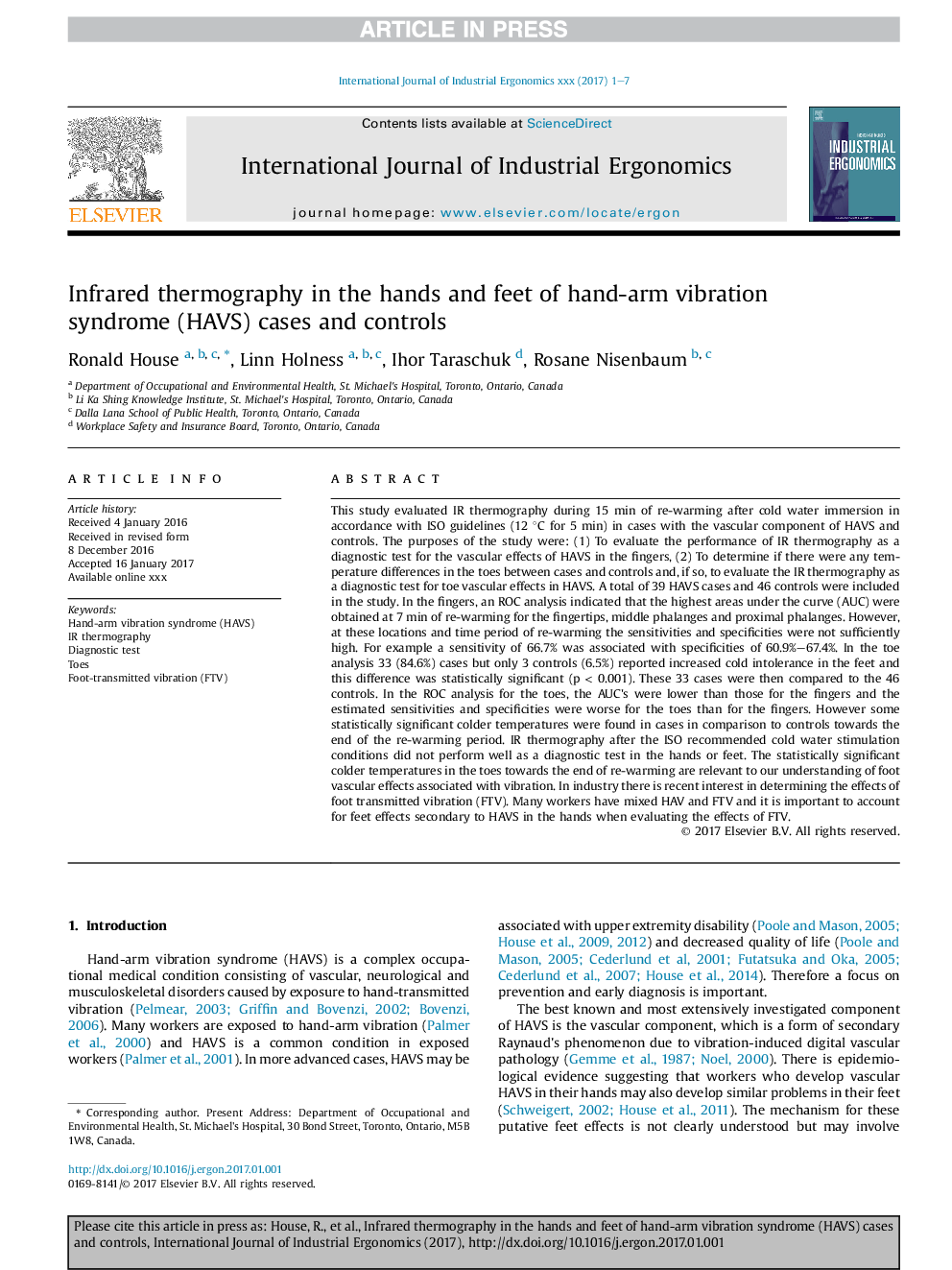| کد مقاله | کد نشریه | سال انتشار | مقاله انگلیسی | نسخه تمام متن |
|---|---|---|---|---|
| 7530511 | 1487413 | 2017 | 7 صفحه PDF | دانلود رایگان |
عنوان انگلیسی مقاله ISI
Infrared thermography in the hands and feet of hand-arm vibration syndrome (HAVS) cases and controls
دانلود مقاله + سفارش ترجمه
دانلود مقاله ISI انگلیسی
رایگان برای ایرانیان
موضوعات مرتبط
مهندسی و علوم پایه
سایر رشته های مهندسی
مهندسی صنعتی و تولید
پیش نمایش صفحه اول مقاله

چکیده انگلیسی
This study evaluated IR thermography during 15 min of re-warming after cold water immersion in accordance with ISO guidelines (12 °C for 5 min) in cases with the vascular component of HAVS and controls. The purposes of the study were: (1) To evaluate the performance of IR thermography as a diagnostic test for the vascular effects of HAVS in the fingers, (2) To determine if there were any temperature differences in the toes between cases and controls and, if so, to evaluate the IR thermography as a diagnostic test for toe vascular effects in HAVS. A total of 39 HAVS cases and 46 controls were included in the study. In the fingers, an ROC analysis indicated that the highest areas under the curve (AUC) were obtained at 7 min of re-warming for the fingertips, middle phalanges and proximal phalanges. However, at these locations and time period of re-warming the sensitivities and specificities were not sufficiently high. For example a sensitivity of 66.7% was associated with specificities of 60.9%-67.4%. In the toe analysis 33 (84.6%) cases but only 3 controls (6.5%) reported increased cold intolerance in the feet and this difference was statistically significant (p < 0.001). These 33 cases were then compared to the 46 controls. In the ROC analysis for the toes, the AUC's were lower than those for the fingers and the estimated sensitivities and specificities were worse for the toes than for the fingers. However some statistically significant colder temperatures were found in cases in comparison to controls towards the end of the re-warming period. IR thermography after the ISO recommended cold water stimulation conditions did not perform well as a diagnostic test in the hands or feet. The statistically significant colder temperatures in the toes towards the end of re-warming are relevant to our understanding of foot vascular effects associated with vibration. In industry there is recent interest in determining the effects of foot transmitted vibration (FTV). Many workers have mixed HAV and FTV and it is important to account for feet effects secondary to HAVS in the hands when evaluating the effects of FTV.
ناشر
Database: Elsevier - ScienceDirect (ساینس دایرکت)
Journal: International Journal of Industrial Ergonomics - Volume 62, November 2017, Pages 70-76
Journal: International Journal of Industrial Ergonomics - Volume 62, November 2017, Pages 70-76
نویسندگان
Ronald House, Linn Holness, Ihor Taraschuk, Rosane Nisenbaum,